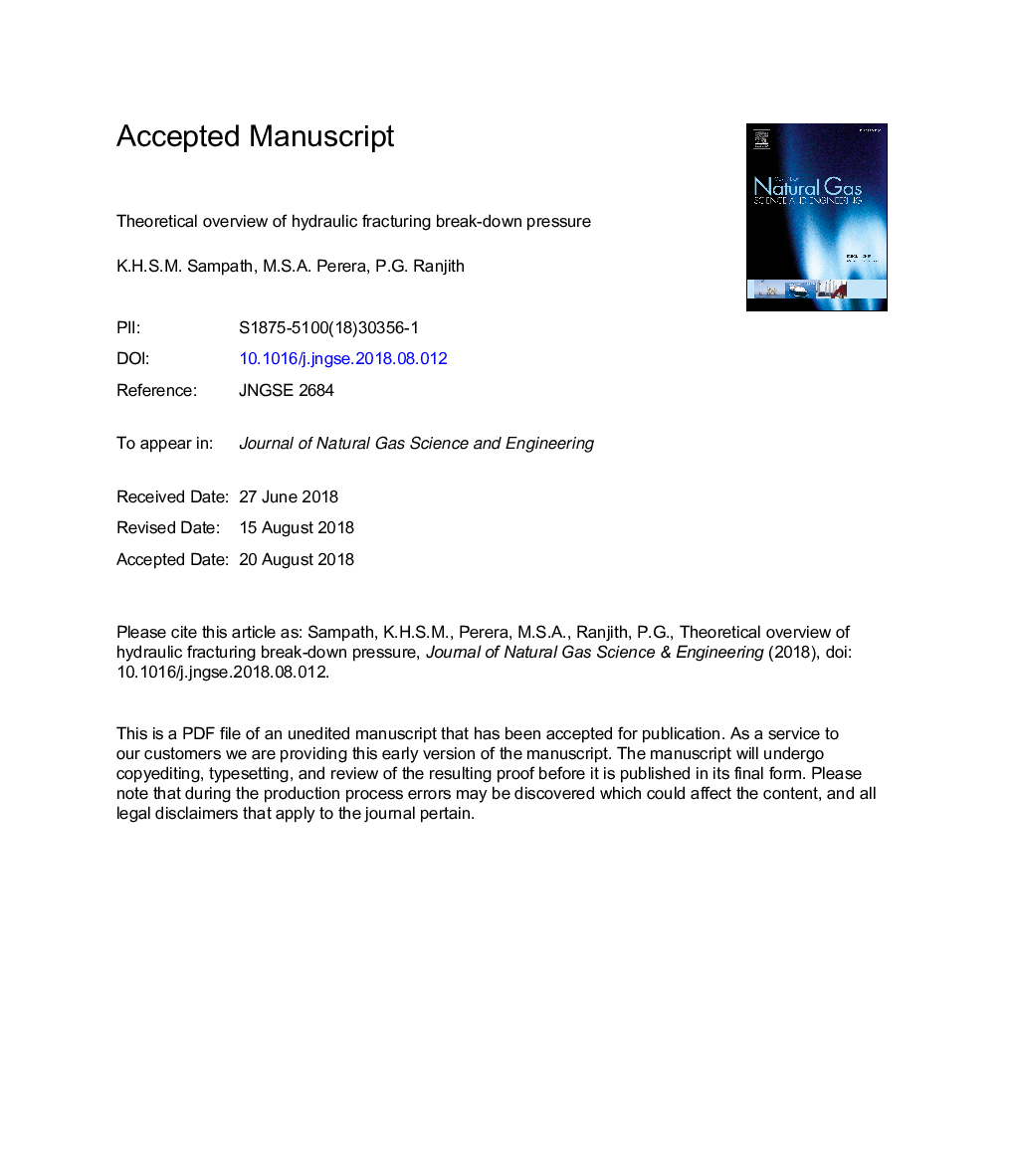| Article ID | Journal | Published Year | Pages | File Type |
|---|---|---|---|---|
| 9953706 | Journal of Natural Gas Science and Engineering | 2018 | 57 Pages |
Abstract
The precise prediction of the break-down pressure is imperative to define the pumping schedule and the relevant stimulation parameters of a hydraulic fracturing process. A number of theoretical models have been derived based on different approaches to predict the break-down pressure, under various field/in-situ conditions. Although, the analytical models have been evolved over time, disagreements exist between the theoretical predictions and the laboratory/field results. This paper comprehensively reviews the derivations, evolutions and limitations of most of the existing break-down models and provides suggestions for further improvements. Among a number of theoretical approaches, stress intensity factor-based approach and the energy release rate-based approach give more reliable predictions, which are in line with most of the laboratory and field results. The tensile strength-based approach is commonly used to derive break-down models, but often provides slightly over/under estimations. Shear-based approach is an oversimplified approach and rarely used for the theoretical predictions. The approaches share many similarities, thus advanced models have been developed by combining the theories to precisely predict the break-down pressure. The actual hydraulic fracturing operation is rather a complex process, which involves a number of governing factors including reservoir and fracking fluid properties. Derivation of a global theoretical model is beyond the bound of possibility, as the modelling of break-down pressure for a given reservoir requires specific details of the particular operation and the in-situ conditions. The fracking with non-aqueous or mixture of fracturing fluids can be much complex due to multifaceted fluid properties, interactions, flow behaviour and phase change, thus requires more analytical, numerical simulations and laboratory/field experiments prior to implementation of large scale field projects.
Related Topics
Physical Sciences and Engineering
Earth and Planetary Sciences
Earth and Planetary Sciences (General)
Authors
K.H.S.M. Sampath, M.S.A. Perera, P.G. Ranjith,
